Tragedy, scrutiny, a six-day coma: How Aussie star Jamie Kah got back on the horse

- by Admin
- November 1, 2024
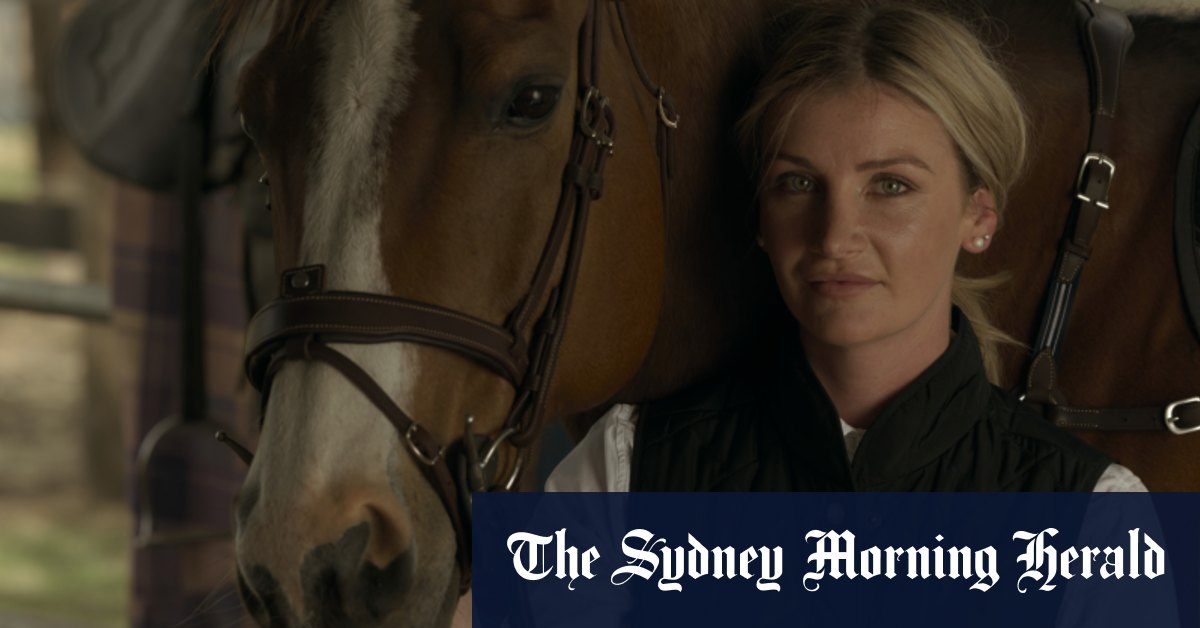
It’s September and the Victorian Racing Tribunal is meeting on the eve of the spring carnival, the most prestigious stretch of the Australian racing calendar. The tribunal members make notes with nice pens. The steward, a kind of horse-racing cop, drones on. It’s low-vibe, but high-stakes. If things don’t go her way, Jamie Kah, 28, the world’s best female jockey and the face of the carnival, could miss weeks of top-tier racing. Kah, all 51 kilograms of her, watches proceedings in a stylish, long cream jacket and her comfiest pair of Gucci stilettos. During her extraordinary career, she’s sat through several tribunal hearings – one, famously, for hosting an illegal COVID party, for which she apologised. But this is different. She’s quietly seething about being here.
In March last year, Kah fell badly during a race. Her mount clipped the heels of another horse and stumbled, pitching Kah off its back and then under the hooves of the thoroughbreds behind (this caused Melbourne Cup-winning jockey Craig Williams to also fall, fracturing four bones. Both horses and riders survived). “When they fell, I knew straight away that it looked very serious,” says Matt Hill, who was calling the race. Kah suffered a brain injury and was put in a six-day induced coma. On waking, she had to Google basic personal facts, like her age, and didn’t feel totally normal for eight months.
Kah returned to racing in August last year, finishing the season in July this year, ranked eighth on the Victorian jockey leaderboard (in 2021, she finished on top with an historic 105 wins, more than any jockey has won in a Victorian metropolitan season, male or female). This spring, fully recovered from her fall, she was looking forward to an unimpeded crack at the carnival’s marquee races, including the coveted Cox Plate, Derby Day and, of course, the biggest of all, the Melbourne Cup. Then came August 31 and the race that brought her here today, to this tribunal.
Kah riding Let’sfacethemusic in the
August 31 race that led to her being charged by the Victorian Racing Tribunal.Credit: Getty Images
Steward Corie Waller, a bearded man with a meticulous manner, replays the race from every angle, building a case against Kah in two parts. First, he says,
Kah failed to advance her mount, Let’sfacethemusic, through a gap between two horses. This opportunity, he says, was available for eight horse strides (about three seconds). Second, he alleges Kah did not ride her horse with sufficient vigour for the last 75 metres, failing to use the whip or a slap down the horse’s shoulder. These racing regulations – think of them as “try harder” rules – exist to deter jockeys from taking money to lose a race. But stewards had checked the betting records and were not suggesting Kah was on the take. They just thought a jockey of her standing should have gone harder because, as Waller pointed out, punters had bet $214,000 on Let’sfacethemusic, which finished fifth. These people deserved a jockey that gave the horse every opportunity to win, he tells the tribunal members.
But Kah and her lawyer, the tall and angular Matthew Stirling, disagree. Giving evidence, Kah says she felt unsafe taking that gap. The day was very windy and Kah’s a rider who determines the location of other horses by sound. The gusty conditions, which made the race footage shaky at times, also made it impossible to hear.
On the replay, Kah points to where Let’sfacethemusic comes out of the gates, throwing his head up and moving erratically side to side. That, she says, was where the horse locked its jaw, meaning it threw the metal bit back in its mouth, leaving her temporarily with no control. She adds that she’d ridden Stay Focused, one of the horses forming the gap ahead. It, too, had locked its jaw in the past and acted erratically. If Kah had taken the gap, Stirling says, one lateral move by either horse could put her in an ambulance again. Also, she’s a rider who rarely looks like she’s riding with “vigour”. The stewards, he says, have that last 75 metres all wrong.
Stirling then sharpens his attack. Only days before the race, Racing Victoria had increased penalties for careless riding, saying its top priority was jockey safety. “If she doesn’t feel safe to take that run, by the laws of racing she should not be taking that run. You can’t have it both ways.” As the day wears on, it’s clear the hearing is not just about a race on August 31. It’s also about the industry’s values: jockey safety versus the interests of the punter. “The truth of racing is that without punting, it wouldn’t survive,” Hill, Racing Victoria’s lead race-caller and voice of the Melbourne Cup, tells Good Weekend later. “The punter, the people investing, have to be protected. But at the same time, we’re not dealing with robots or machines going around a track. They’re 50-kilogram human beings who have barely eaten. They get up at 3am every day, riding animals that are 550 kilograms going 70 kilometres an hour … There’s a dead-set ambulance following them around the track. So that is what [the industry] grapples with and why it goes to a tribunal: it’s the juxtaposition between the two.”
During a break, Kah leans against the wall outside the hearing room and shakes her head. She’s the industry golden girl, a Victorian Racing Club ambassador, the one rolled out to inspire young people and promote the ethical rehoming of ex-racehorses (she’s found homes for about 30 thoroughbreds and cares for several herself). Straight after the hearing, she will fly to her home state of South Australia and donate her time to promote the Melbourne Cup. Yet, another arm of the industry – the stewards – have her here all day, on charges for not trying hard enough in a race she didn’t feel safe in. “They want me to ride in their Cup but they’re doing this to me. I don’t understand it,” she says.
On a freezing spring day I arrive at Jamie Kah’s farm on the Mornington Peninsula, an hour’s drive south of Melbourne. Kah, warm and welcoming and followed by her dogs Bubbles and Eva, greets me at the garden gate. In the backyard, I spot Kah’s mother, Karen, at a distance. In 2022, Kah’s parents moved from South Australia to a converted pool house on their only child’s property. “They’re amazing, amazing people,” says Kah. They help her with the 15 horses she owns or agists on her farm, and go to all her races.

Kah with one of her favourite horses, Dollars, a retired racehorse turned equestrian horse.Credit: Photograph by Josh Robenstone. Shirt by Polo Ralph Lauren. Vest by Vala Equestrian. Pants by Ariat Australia. Gloves by Gala Gloves. Kah’s own earrings.
John and Karen Kah were not really horsey people. They were top speed skaters, representing Australia in the 1980s and 1990s in several Winter Olympics (John also owned a metal-detecting outfit, then a building business, and Karen did the books). Looking for a new hobby that didn’t involve going around in circles on ice, they moved out of Adelaide and learnt how to ride horses. Their daughter, who they describe as a strong-willed child and named after actor Jamie Lee Curtis, took the horsey thing to a whole new level. Chubby-thighed and helmeted, Kah was being led on a horse at 22 months old. She was riding miniature ponies not long after and was often found sleeping with them in the hay at their property at Kersbrook in the Adelaide Hills. “I was just like that crazy horse girl who never grew up,” says Kah sitting on her back deck. “I just love how hard they try for you, how they understand you.”
Kah started pony club when she was about four, then at eight took up Mounted Games. I’d never heard of the Mounted Games, so Kah shows me some footage. It’s totally wild, like pony club on steroids. At a frantic pace, riders compete in relay races, leaning down to pick up objects from the ground, then depositing them elsewhere. They ride around with flags and sticks and hurl themselves on and off the saddle. At 14, Kah went to London to compete in the Mounted Games world championships and today, credits the sport for her low rate of career falls – only three – and also for her renowned sense of balance. “I’m just used to hanging off the horse and pulling myself back on.” (Kah helps raise money to send local kids to the same world championships.) Bracing ourselves against the wind, I ask Kah how she fared at the championships. “I ran second,” she says, looking downcast for a beat. I realise then, underneath her humility and warmth, there’s a current of pure competitiveness running through Jamie Kah.
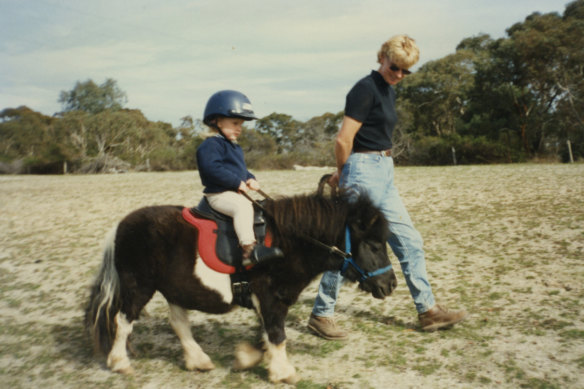
Kah was just 22 months old when she was introduced to riding horses; they ended up shaping her life.Credit: Courtesy of Jamie Kah
Walking back to the house we talk about her fiancé Ben Melham, also a top jockey. She often beats him in races. “There are no favours out there,” she says. “I don’t say sorry but I do feel a little bit bad.” Kah has a keen sense of her place in Australian racing history. She’s won 14 group 1 races, the most prestigious races offering the top prize money. This is more than any Australian female jockey, including Michelle Payne, the famous 2015 Melbourne Cup winner, who retired earlier this year with five group 1 wins. (The best jockey currently riding in Australia is 32-year-old Kiwi James “J-Mac” McDonald, ranked second globally with 100 group 1 wins, including this year’s Cox Plate.) “I want to win a lot more group ones, so then no one can ever beat my record. No girl,” Kah says. “I just want it to stand while I’m still alive.”
When trainer John MacMillan first saw Jamie Kah ride a racehorse, he knew immediately she had a rare talent. MacMillan – whose stables were in Mount Pleasant, a small town in the Barossa, where the Kahs had bought an 80-hectare property – wasn’t supposed to let 14-year-old Kah, his part-time stablehand, on a racehorse. Karen had explicitly banned it; she considered them “big, tall, crazy creatures”. But within weeks of Kah arriving, MacMillan had the teenager on top of racehorses and galloping them within a month. “For most people, that process would take six months,” MacMillan tells me. Kah mastered every instruction quickly, worked hard. But above all, he says, she could read horses. “A horse will tell you how it’s feeling through its body language. It’s in the way they look at you, the way they react, put their ears, their eyes, their face … Some people don’t need years to learn that, they just get it. And that’s Jamie.”
Kah had vague ambitions to be a vet or jillaroo, anything, really, that involved a horse, but as soon as she galloped a thoroughbred, her singular ambition was to become a jockey. “I had never felt anything like it,” she says. “Just to let a horse go that fast. It was this rush.” Kah asked MacMillan if she could be his apprentice and, after some discussion, in April 2011, John and Karen took the big step of allowing their daughter to leave school for a jockey apprenticeship. Kah was 15 and had completed the first term of year 10. The Kahs now realise they were ignorant about the industry. “Jamie could have been like a lot of the young apprentices, just spat out and … almost unemployable,” says John. Karen adds, quietly: “I think, as a mother, I just watched her grow up too quick.”

Kah with her parents, former Olympian speed skaters John and Karen.Credit: Courtesy of Jamie Kah
Kah’s first race was in March 2012. She was 16. Karen and John drove Miss Fabuleux, a mare MacMillan was about to retire, eight hours to Streaky Bay, where Kah came third. But she notched up her first win the next month and, from there, seemed unstoppable. MacMillan put his young apprentice on almost every horse in his stable, an approach that was unheard of for a trainer. In 2013, after her first season of riding as an apprentice, Kah won the South Australian metropolitan jockey premiership. She went on to win it twice more, in 2017 and 2018, as a senior rider. She was so good, leading trainer Tony McEvoy once said having Jamie Kah ride his horses felt like “a legal form of cheating”.
Part of what makes Kah a good jockey is her relationship with horses. Jockeys have several crucial minutes, between the mounting yards and the starting gates, to get to know a horse they possibly haven’t met before. Does the horse have a “nice mouth” or is it likely to bolt? Is it going to relax or is it easily spooked? “I’ve been doing it for 12 years and I pretty much feel I know the horse when I get to the gates now,” Kah says.
Loading
Kah is also good at getting the horse out of the barrier, possibly due to her years of equestrian showjumping, she says. “This normally helps me put them into a spot quickly and then I just let the horse pretty much tell me where it wants to be.” When she speaks like this, Kah seems to downplay her strategic skills, but don’t be fooled, says MacMillan, who describes her as “a wonderful, down-to-earth country person”. “She can read what the other horses are doing and what the other jockeys are thinking. She judges the pace exceptionally well.” She’s not a vigorous-looking rider, he says. “She’s riding to keep the horse comfortable, keep it nice and balanced, keep it in a rhythm and they’re winning for her because they are happy.”
Despite Kah’s early success, there were lows. In October 2014, Kah was racing at Murray Bridge, about an hour south-east of Adelaide. One of her closest friends and a fellow apprentice, Caitlin Forrest, 19, was just in front of Kah when Forrest fell and went under the hooves of Kah’s mount before being trampled by the pack of horses behind. Forrest later died in hospital. After Forrest had gone under her horse, Kah, in shock, sat on her mount and did nothing, but still finished first. She was bombarded with messages from the public and punters abusing her for running over Forrest and winning. “I even got death threats,” she says. (She still gets death threats and abuse from punters, especially when she’s riding a favourite that doesn’t win.)
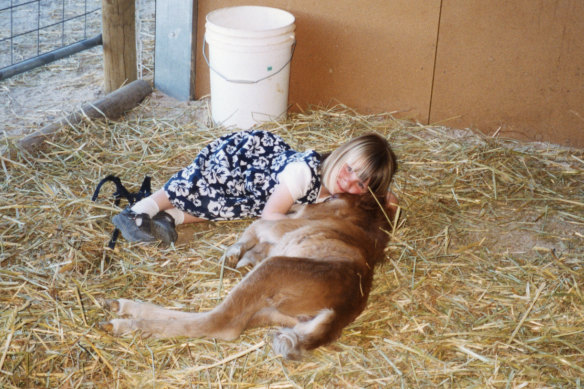
As a child, Kah was often found sleeping with the miniature ponies she learnt to ride on.Credit: Courtesy of Jamie Kah
Following Forrest’s death, Kah went through a rough patch. She got in trouble several times with the stewards, once for being dishonest about a medical certificate. As a late-teen, she was earning huge amounts of money and, says MacMillan, that would have been a heady situation for anyone. He recalls one year that Kah was earning so much, she got a tax bill for $85,000. “She was not doing anything wrong that anybody else wouldn’t do, but it is really hard to find yourself with that sort of money as a young kid.” Her close friend and fellow jockey, Eran Boyd, says people had no idea how much pressure Kah was under. But Kah, she says, was the only racing person who didn’t forget Boyd when she was recovering from a fall.
Reflecting back on this time, Kah says she was hanging with the wrong circle of friends. She was devastated by Forrest’s death. Her friends were going on gap years. “I just sort of had enough of the racing industry.” In 2015, she took a six-month break, staying with relatives in the Netherlands and working at an English stable. “It was just the best thing because I got to be a kid again and not have people looking at me.”
In August 2021, Jamie Kah was the hottest thing in Australian racing. It seemed like she could do no wrong. Two years before, after dominating the South Australian scene, she’d moved to Melbourne, chasing fresh challenges. “I worked my arse off,” she says. And it paid off: within a month, Kah had bagged her first group 1 win. By mid-2021, she’d taken out the Victorian metropolitan jockey premiership with a record 105 wins and earned $12.2 million for owners. (Jockeys keep five per cent of their prize money and are paid for every ride. Jumpouts – getting the horse to practise coming out of the gates – and trackwork, both of which often involve inexperienced horses and are therefore risky, are done for free, despite jockeys lobbying for change.)
On August 26, 2021, when Melbourne was grimly suffering through its sixth COVID lockdown, news broke that Kah and fellow jockeys Melham, Ethan Brown and Celine Gaudray had violated restrictions by having a party past curfew. Later it emerged that Mark Zahra, the two-time Melbourne Cup winner, was also at the party, hosted at an Airbnb Kah had rented while renovating her house. But it was Kah’s face that dominated the news. It was a terrible look for racing, which had been allowed to continue through the pandemic. Kah issued a public apology and copped the punishment: a three-month suspension that excluded her from the 2021 spring carnival, right at the point when she was, form-wise, smoking hot.
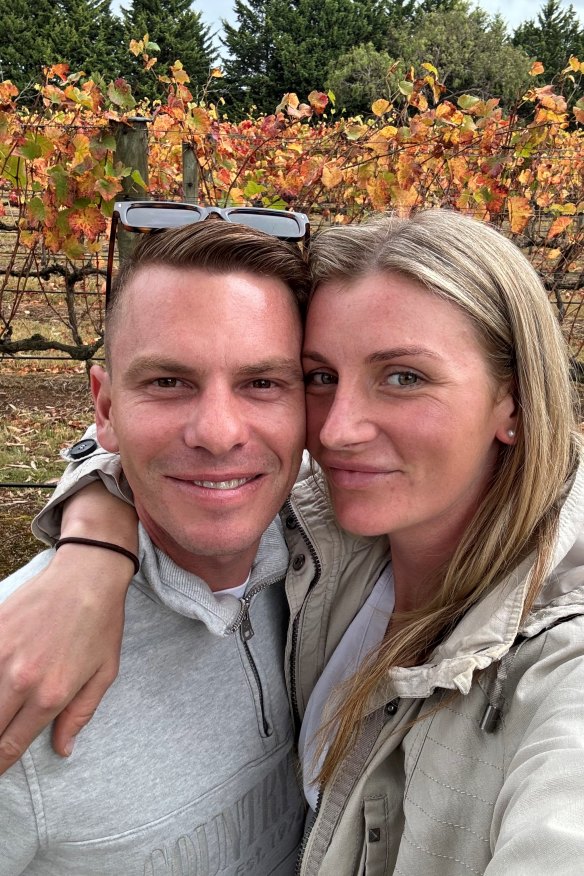
Kah with fiancé and fellow jockey Ben
Melham, who proposed on a ride with two of Kah’s favourite horses. The pair will marry in January.Credit: Courtesy of Jamie Kah
This was the beginning of a crisis for Kah. She was always the likeable, nice girl and this felt like a mortifying fall from grace. “It was a very shit time in my life,” she says. For 12 days, Kah stopped eating. It’s not something she recommends, but it had one professional upside: she dropped from 56 to 51 kilograms and stayed there. Now, on race days, she can eat breakfast and drink a little more water. And she only has to shed one kilogram through race-day “wasting” (sweating out the excess weight in a spa or sauna). Her fiancé Melham is often at 59 kilograms and spends hours trying to shed three to four kilograms every race day (the couple recently posted Instagram shots of them snugly slotted side-by-side in their small wooden-box of a home sauna). “I don’t know how jockeys do that every day, it’s horrible,” she says.
As stressful and embarrassing as the COVID party fallout was, Kah ended up in a happier place. She used to hate people disliking her. She thought trainers had to love her to ask her to ride. Comments from punters would rankle. “But now I’m like, ‘Why did I care so much?’ If they like me, they like me. If they don’t, I do not care.” Another lesson she’s learnt: don’t trust people you’ve only just met. After a night out in June last year, a young stablehand Kah had met only hours earlier secretly filmed her raking up three lines of white powder at home. The footage eventually made its way to the media (the stewards charged Kah with conduct prejudicial to racing but the tribunal cleared her, saying she didn’t know she was being filmed and accepted her evidence that she went to bed without consuming the white powder). Afterwards, Kah pruned her large circle of friends. “Now it’s just really the people who are next to me, my partner and my parents … I’m in the limelight for everything that I do.”
‘In 20 years’ time, I can see that out of a field of 24 jockeys in the Melbourne Cup, 15 will be female.’
Race-caller Matt Hill
Kah says she’s “not like a feminist or anything like that” but she believes this limelight, this focus, is at least partly because she’s a female rider. “I’m so grateful to have achieved these milestones, but because I’m female I’m just put on show all the time and I have to be absolutely perfect.” (This focus extends to gossip and media speculation about her love life that male jockeys do not tend to endure.)
Loading
Race-caller Matt Hill thinks Kah is a victim of her success. “She is one of the first females that has come through and just dominated. That year when she had 100 winners [2021], she was just killing them and we haven’t seen the likes of that before. So what comes with that is obvious scrutiny.”
Racing is still a male-dominated sport. Racing Australia’s form guide still puts “Ms” next to Kah’s name while the male jockeys have no “Mr”. Within the industry, Kah, one of Australia’s best athletes and a fully-grown woman, is constantly referred to as a “girl” or a “young lady”. Putting aside the intense scrutiny though, Kah does not think the industry is generally sexist. Apart from a few old-school owners who don’t want a woman riding their horse, she says she’s been given every opportunity. And now a huge shift is afoot: women are often outnumbering men as apprentice jockeys. In NSW, women made up 14 of the 20 apprentices employed in the past year, while Victoria’s 2024 apprentice program welcomed 10 women and only one man. It makes sense: women have an edge over men in an industry where carrying a kilogram of extra weight can make a horse win or lose. But it’s also because jockeys like Kah have shown the way. “She’s become a trailblazer, not deliberately, but she’s the face of that [female-led] revolution in racing,” says Hill. “In 20 years’ time, I can see that out of a field of 24 jockeys in the Melbourne Cup, 15 will be female.”
On the other side of Jamie Kah’s kitchen bench are a set of shelves for her group 1 trophies. She picks up her favourite: this year’s Newmarket Handicap, the esteemed sprint race held at Flemington in March. “That was the best day of my whole racing career,” she says. It was at last year’s Newmarket Handicap meeting that Kah had her fall, in the Sires’ Produce Stakes, race four. But the big race, the actual Newmarket Handicap, was race seven, so her mate, popular jockey Dean Holland, had to take his injured colleague’s ride on a horse called In Secret. Incredibly, he won. “It’s very unfortunate what happened to Jamie and Willo (Craig Williams), and my thoughts go out to them,” he said, after one of the biggest races of his career. Six weeks later he was dead, his ride striking the heels of another horse at a Victorian country meet. He left behind his wife, Lucy Clampin, and their four children, all under five.
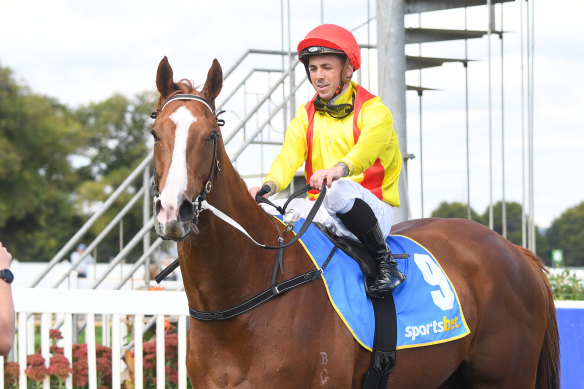
Dean Holland in March 2023. He rode in
the Newmarket Handicap in Kah’s place after her accident but died six weeks later in a race fall.Credit: Getty Images
So this year’s Newmarket Handicap meeting was freighted with all sorts of emotion for Kah. It had been a long road back from her accident. She’d returned to racing five months afterwards, which she now believes was too early. “I felt very safe, but a good explanation is that I just felt drunk when I was riding.” It was only one morning, eight months after the fall, that she suddenly felt fine, like a fog clearing. The fall itself, indeed that whole day, has been wiped from her memory – something she considers a blessing – but there’s still a lingering question of how the accident affects her risk-taking in a race. Did she, for example, not take that gap the stewards wanted her to take on Let’sfacethemusic because of the fall? Kah insists she doesn’t think about falling when she’s racing, though admits it could be in the far back of her mind. She believes it’s better to give up racing than ride from a place of fear because that’s when “you do things wrong out there and that’s more dangerous”. (When I ask Mick Price, a leading trainer who works frequently with Kah, whether the fall has affected her racing, he says: “She may be a bit more careful, but so she should be. As jockeys get a bit older and smarter, they should be more careful of getting too close to heels or going into spots where there’s no room.”)
The first milestone to get through on that Newmarket Handicap meet this year was the race she’d fallen in. In the starting gates, a fellow jockey asked her if she would push forward. She went blank and didn’t respond. “It was a bit of a weird feeling, I must, in the back of my mind, have had this little memory of [the fall].” But she came out of the gates and won, her normally unflappable facade broken by tears as soon as she crossed the line. Then, to top the day off, she emphatically won the Newmarket Handicap by a horse length. Afterwards, pushing away more tears with her white jockey gloves, she said: “I thought I was a tough person but I’m not today. Even [winning] the last race was massive for me, to get through that and have it behind me. This is for Dean Holland.” And then, in a tender and heartbreaking moment, she went and played with his adorable kids.
Standing in front of her trophies, Kah is reflective. “I think it’s amazing what racing can do, like, you couldn’t have scripted something like that day. It can just make you feel amazing, racing, and it can make you feel absolutely terrible. But also, the best days of my life have been on a horse.” She pauses, then takes an entirely unexpected turn. “Like when I got engaged, on a horse!”
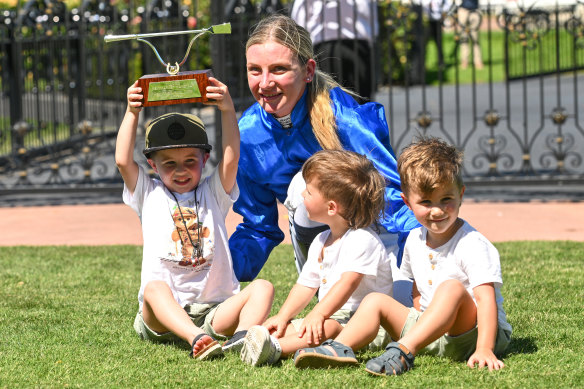
Kah in March this year with three of the late Dean Holland’s four children after winning the Newmarket Handicap, the race she missed after her serious fall at the same meeting last year.Credit: Getty Images
She then tells me the story of how Melham, who has three children from his previous marriage, proposed this year on a Valentine’s Day ride with two of her favourite horses, Dollars and Brax. It would be impossible to be with someone who is not a jockey, she says. “If we have an amazing day at the races, we’ll come home and have a glass of wine together and be like: ‘How good’s that?’ And then the next day, we’ll have a terrible day at the races and you come home and you don’t have to talk to each other. But we’re there for each other.” They marry in January. “She’s finally content and happy with life,” says mum Karen.
After the trophy inspection, Kah calls Melham to come and demonstrate for me the mechanical horse, which sits on the back deck. The horse is a strange-looking beast: undoubtedly a horse, with a mane of fake hair, but it is legless and sits on rails. Melham emerges and explains that he uses the horse when injured. He grabs a whip and squats over its back and pushes its neck down. The neck comes up and he pushes it again. This obviously takes a bit of energy, because after a short spell, he’s puffed. He’s also given the fake horse a good whack with the whip, which, because the horse is hollow, makes a disturbingly loud BANG! BANG! BANG!.
Earlier, I asked Kah about the whip, one of the enduring bugbears for animal welfare activists. Kah says the whip is now padded and doesn’t hurt the horse, instead creating a whacking sound, which “spooks them along a little bit, wakes them up”. This is disputed by activists, but in recent years they’ve focused more on other issues. A spate of seven horse deaths in and around the Melbourne Cup over the past decade took the shine off for some (there are now “Nup to the Cup” protests every year). In 2019, a shocking exposé on the ABC’s 7.30 program revealed that healthy thoroughbreds were being slaughtered in distressing circumstances by dodgy knackeries. The public outrage prompted the industry to announce a suite of reforms. Racing Victoria has redirected $38 million of prize money into horse welfare since 2017, increasing checks, banning thoroughbreds being sent to knackeries and funding the retraining of racehorses. Meanwhile, to address horse deaths, Racing Victoria and the Victorian Racing Club introduced stringent screening processes for internationally trained horses competing in the spring carnival and for all horses in the Melbourne Cup.
But there’s still a long way to go. A promised National Horse Traceability Register has not materialised. Racing Victoria has done several thoroughbred audits but would not release the results to Good Weekend, or the numbers of horses still going to abattoirs. A big part of the problem is the sheer scale of breeding. Racing Victoria, for example, estimates that 3500 thoroughbred foals are born each year in the state and 1800 racehorses retire. On average, racehorses retire at five years old, but their life expectancy is between 25 and 35. This creates a glut of thoroughbreds, which are not cheap to keep. “There’s a huge black hole of horses that go completely missing,” says Elio Celotto, campaign director of the Coalition for the Protection of Racehorses.
Kah says the industry has made big improvements. “When I started there was no database of horses, as there is now,” she says, referring to Racing Australia’s registrar of racehorses. “Probably the next thing they can do is try and limit the numbers … because there’s just too many horses getting bred.”
Loading
Speaking of too many horses, one tricky part of being a top jockey is choosing which horse to ride in the big races. For this year’s Melbourne Cup, for example, about four trainers and owners were courting Kah to ride their horse (she will also be providing rare behind-the-scenes access for the Cup broadcast on the Nine Network, owned by the same company that publishes Good Weekend). It can be a delicate process. In the Cup, her sentimental wish was to ride The Map, the South Australian horse trained by Dan Clarken and Oopy MacGillivray, who are like family to her. In the end, based on form, she chose Point King, trained by Anthony and Sam Freedman, only to see him withdrawn 10 days out from the race. She will now ride the Ciaron Maher-trained Okita Soushi, a seven-year-old stallion.
This spring, Kah made another tough decision: to forgo the Caulfield Cup for Australia’s richest race, The Everest, held on the same day in Sydney (she could have picked up $350,000 if she’d won, but, in a huge disappointment, her horse Traffic Warden was a last-minute scratching, after rearing up in the barriers and suffering lacerations). Kah leaves many of these decisions to her race rides manager Lachie Weekley, who studiously follows every horse and race. But it does matter how she feels. If she’s had a long relationship with a horse and will be devastated if it wins without her, she’ll choose it over another horse. When we talk about this, she and Weekley are in the middle of assessing some big rides for the spring carnival. But first, she has to get through the tribunal hearing.
Eventually, after more droning on, the tribunal evidence for and against Kah wraps up. After lunch, retired County Court judge Kathryn Kings delivers the verdict: Kah is guilty of not riding with enough “vigour and purpose” to take the gap. This, she tells Kah, is a departure from the standard “expected of a rider of your standing”. Further, in the last 75 metres, they found the star jockey rode with insufficient vigour.
‘I could have taken that gap and injured myself and others – and then I would have got done for careless riding. You can’t win.’
Jamie Kah
Kah’s face shifts from neutral to glum. The parties then argue over a penalty. Steward Corie Waller says it was a serious rule breach that tangibly impacted the industry because it undermined wagering. He calls for a suspension of no less than six weeks. This is a crucial moment: if the judges agree, Kah will be out for most of the spring carnival. Stirling reminds the judges of his client’s exceptional safe-riding record. When Kings announces a three-week penalty, Kah wipes something from her eye and gets out her phone to work out the dates (she can delay the suspension for up to nine days). She will miss some big races, and it will be a substantial financial hit, but Kah will return for the majors, like the Melbourne Cup and the Cox Plate.
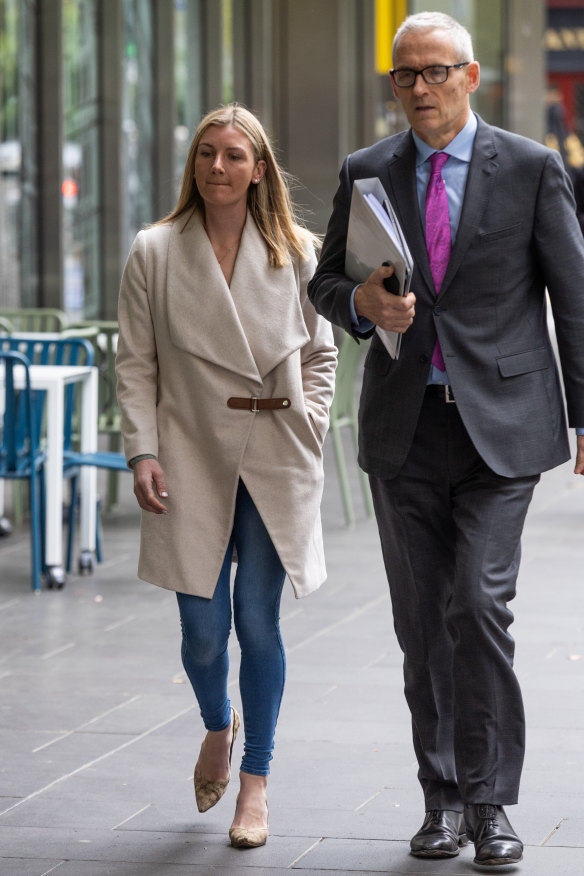
Kah at the Victorian Racing Tribunal in September with her lawyer, Matthew Stirling, to defend her riding charges.Credit: Jason South
We leave the hearing and take the lift down to the street. Kah is fuming. “I could have taken that gap and injured myself and others – and then I would have got done for careless riding. You can’t win.” As we go through the security barriers, she adds: “Did you hear what they were saying about the wagering?” Who cares about wagering, she seems to be saying, when a human life is on the line?
“I think the industry is moving in the right direction,” MacMillan says. “But in this case, Jamie’s a bit of a victim of the wrong direction because they’ve placed more emphasis on the punter than they have on jockey and horse safety.”
Back at Kah’s farm, we visit Rolly (formal name Rolex, after his dad Caroly and mum Lucky Lexi). He’s got his hoof in an empty pink food bin. “This is my Olympian,” she says, like a proud mother. Kah dreams of one day winning an Olympic gold medal for showjumping on Rolly, a magnificent, dark-brown Dutch warmblood crossed with a racehorse. She almost bounces with excitement when talking about him. “People probably go a lifetime trying to breed a horse like this, but somehow I bred him straight away. He’s a freak.” Kah’s Instagram is full of videos of Rolly and Kah effortlessly gliding over jumps at local competitions (this is what she does on Sundays).
But alas, you can’t be an Olympic showjumper and a star jockey. How would you squeeze it in, what with the 3.30am wake-ups and the 7.30pm bedtime and the six-day weeks driven by a racing calendar that only pauses on Christmas Day? After she becomes a mum, that’s how. She’ll retire from racing when she has kids.
“Not coming home one day is not something I want to put on a child, especially after what happened to me last year.” The timing works: showjumpers mature at around 10 and 15 years, and Rolly is only six. In the meantime, despite all the tribulations and risks of racing, Jamie Kah has plenty more to achieve as a jockey.
“I’m nowhere near ready to retire,” she says.
To read more from Good Weekend magazine, visit our page at The Sydney Morning Herald, The Age and Brisbane Times.
The Latest News
-
November 15, 2024‘A Heavy Crown’: Australian media’s obsession with Virat Kohli remains unmatched | Cricket News – Times of India
-
November 15, 2024Red Dawn: Australian Football League’s Gold Coast Suns Launch ‘Fearless’ New Brand, Logo
-
November 15, 2024Kyrgios confirmed to return to ATP Tour at Brisbane International 2025
-
November 15, 2024Australian bounce India’s arch-enemy amid KL Rahul dilemma
-
November 15, 2024Nick Kyrgios set to make long-awaited return to tennis as comeback date revealed


